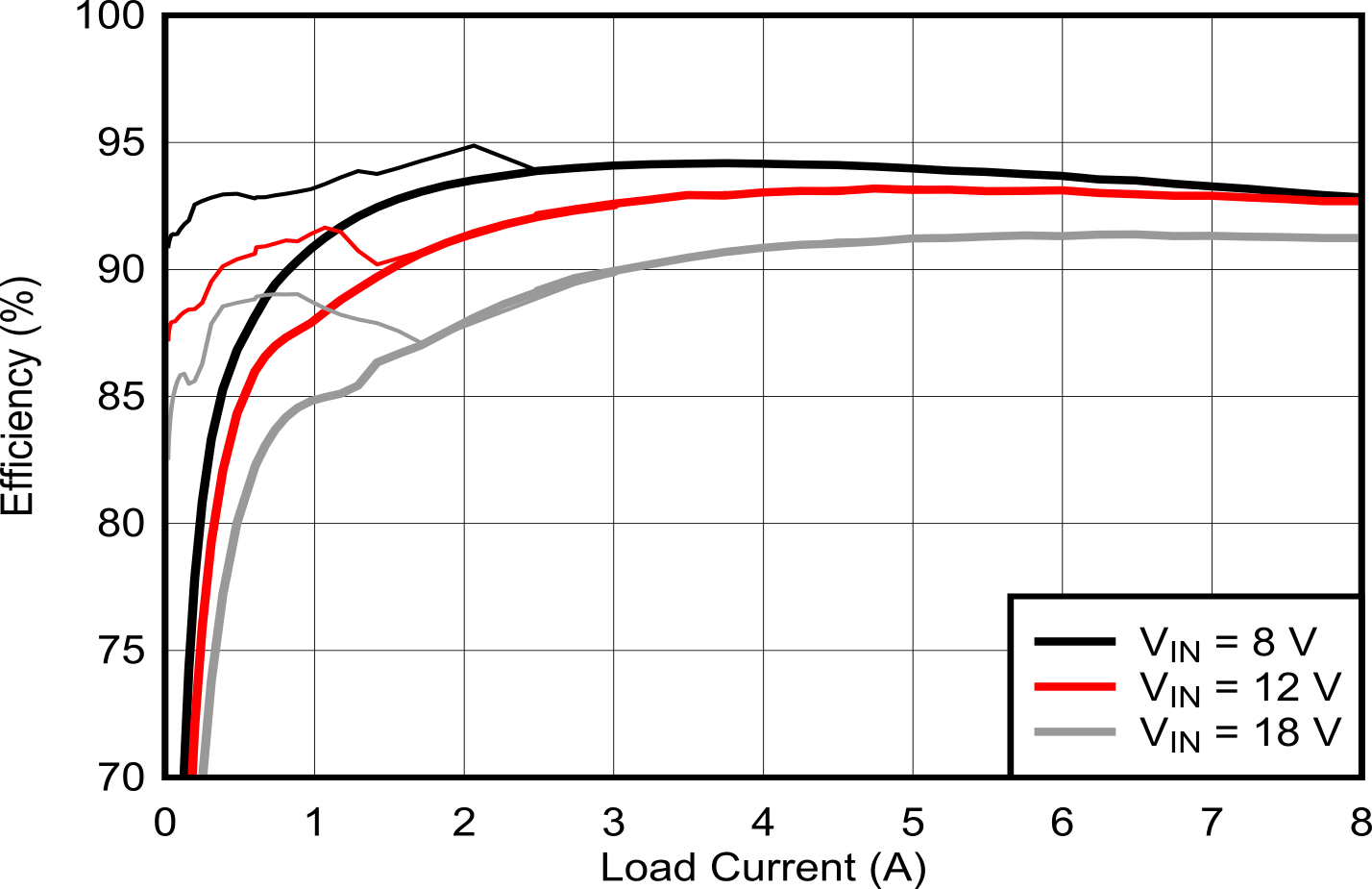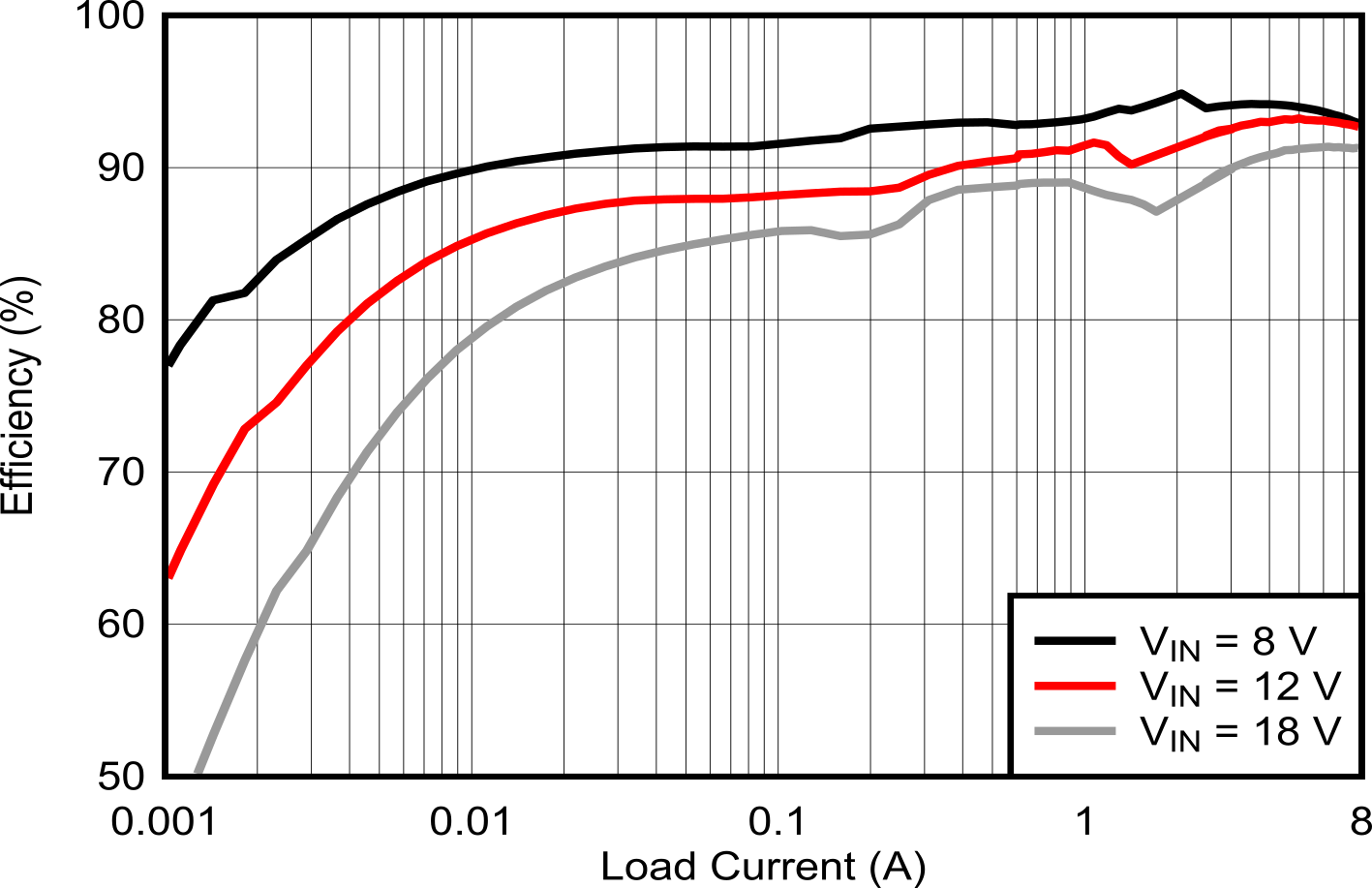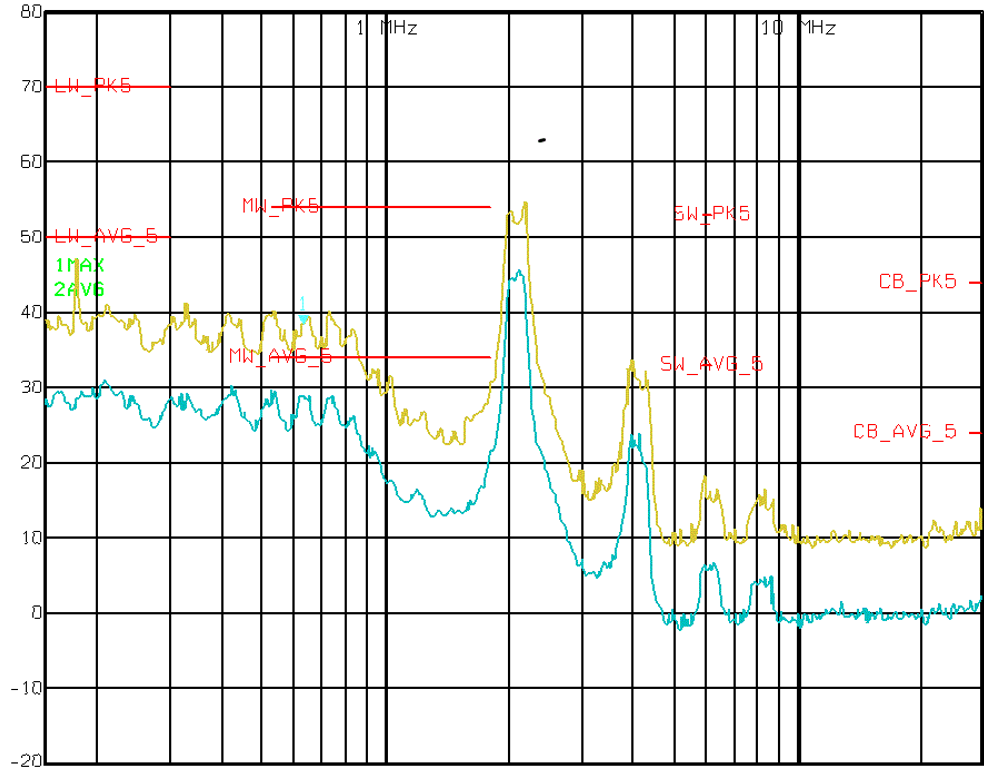ZHCSNB5A June 2021 – February 2023 LM25148-Q1
PRODUCTION DATA
- 1 特性
- 2 应用
- 3 说明
- 4 Revision History
- 5 说明(续)
- 6 Pin Configuration and Functions
- 7 Specifications
-
8 Detailed Description
- 8.1 Overview
- 8.2 Functional Block Diagram
- 8.3
Feature Description
- 8.3.1 Input Voltage Range (VIN)
- 8.3.2 High-Voltage Bias Supply Regulator (VCC, VCCX, VDDA)
- 8.3.3 Precision Enable (EN)
- 8.3.4 Power-Good Monitor (PG)
- 8.3.5 Switching Frequency (RT)
- 8.3.6 Dual Random Spread Spectrum (DRSS)
- 8.3.7 Soft Start
- 8.3.8 Output Voltage Setpoint (FB)
- 8.3.9 Minimum Controllable On Time
- 8.3.10 Error Amplifier and PWM Comparator (FB, EXTCOMP)
- 8.3.11 Slope Compensation
- 8.3.12 Inductor Current Sense (ISNS+, VOUT)
- 8.3.13 Hiccup Mode Current Limiting
- 8.3.14 High-Side and Low-Side Gate Drivers (HO, LO)
- 8.3.15 Output Configurations (CNFG)
- 8.3.16 Single-Output Dual-Phase Operation
- 8.4 Device Functional Modes
-
9 Application and Implementation
- 9.1 Application Information
- 9.2 Typical Applications
- 9.3 Power Supply Recommendations
- 9.4 Layout
- 10Device and Documentation Support
- 11Mechanical, Packaging, and Orderable Information
9.2.1.3 Application Curves

| 5-V output | |||

| 8-A resistive load |

| VIN ramps from 12 V to 36 V | 5-A load |

| VIN step to 12 V | 8-A resistive load |

| VIN = 12 V | FPWM |

| VIN = 12 V | 8-A resistive load |

| 5-V output |

| No load |

| VIN falls to 3.8 V | 5-A load |

| VIN = 12 V | 8-A resistive load |

| VIN = 12 V | FPWM |

| VIN = 13.8 V | 150 kHz to 30 MHz | 7-A resistive load | |